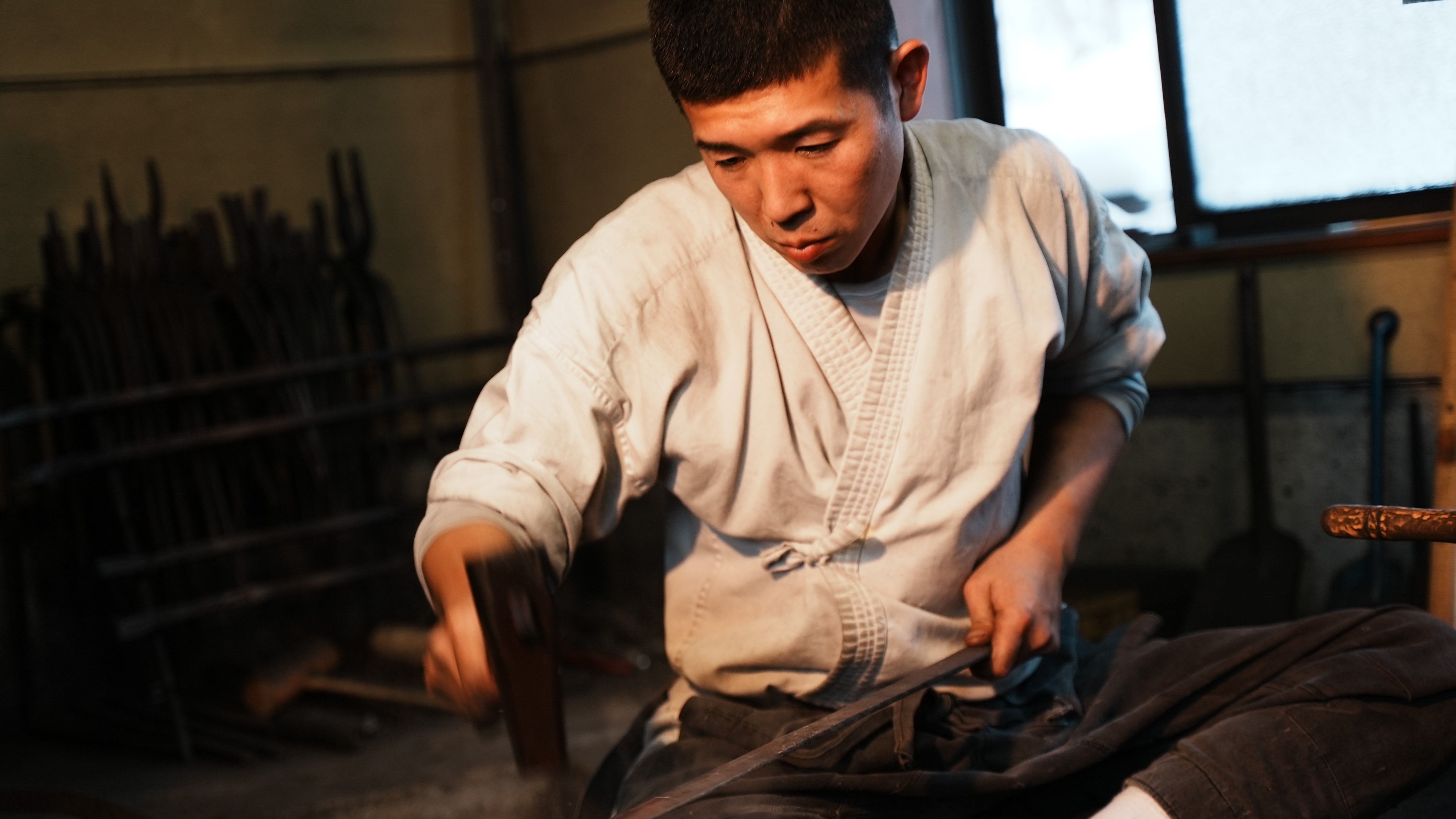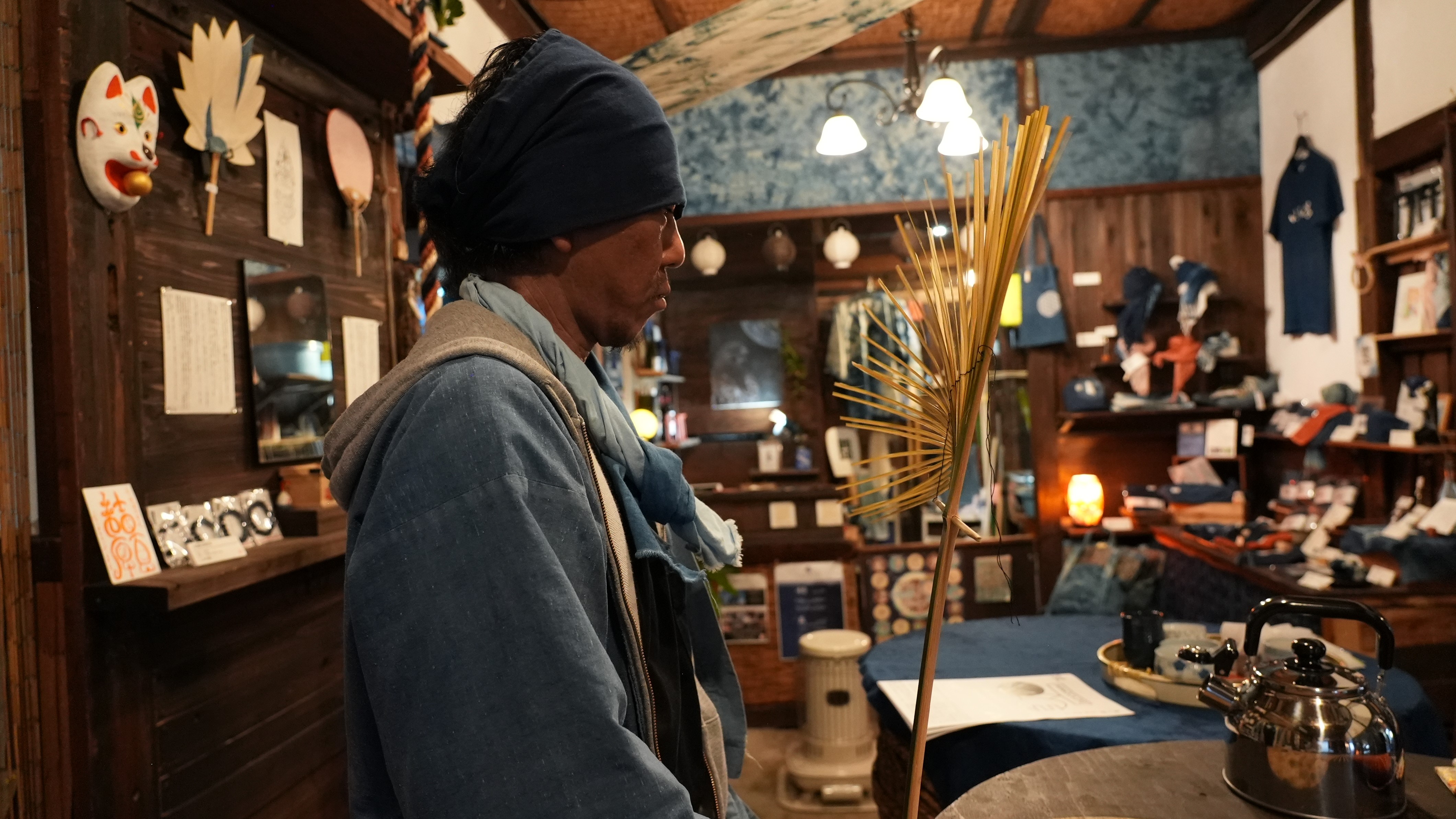- Craftsman -

Japanese swordsmith Kei Nezu
Born in Tokyo. When he was a high school student, he met
“Meibutsu Kanze Masamune,” a national treasure sword at a
museum. He has received many awards in the world of swords,
including the Minister of Economy, Trade and Industry Award
and the Minister of Education, Culture, Sports, Science and
Technology Award. He has received numerous awards in the
world of swords, including the Minister of Economy, Trade
and Industry Award and the Minister of Education, Culture,
Sports, Science and Technology Award. He produces swords
that protect their owners and pave the way for them.

Indigo Dye Marugame Fan Craftsman Tonbiii(Yutaka Shimizu)
Born in Kagawa Prefecture.
After leaving his office
job, he trained in Tokushima and his hometown Marugame,
focusing on creating unique works that combine authentic
indigo dyeing with Marugame fans. Alongside his craft, he
also runs a guesthouse and workshop called "Hatagoya
Tonbiii" (Travelers' Inn Tonbiii).

Edo-style pattern carving Craftsman Akio Takai
Born in Shirako-cho, Suzuka City, Mie Prefecture. Although
the 73 years old artisan once quit his family handed down
"Kata Carving"craftwork in the past, he decided to picked up
his small knife again after many years to pass on his
craftmanship to next generations when he aware that "Kata
Carving" was on the edge of extinction due to craftsman
decline. Currently, he is energetically promoting his
craftworks by hands-on workshops and lessons at his own
studio in Higashi-Ome and at elementary schools throughout
the Japan.

Tatami Craftsman at Takaokaya Tsunekawa Tatami
shop Taihei Tsunekawa
Born in Tokyo. He is the sixth generation of the Takaokaya
Tsunekawa Tatami shop, which has been in business for more
than 160 years. After graduating from university, he
enrolled in a tatami vocational training school and obtained
the national qualification of Tatami Production Technician
Level 1 and a tatami instructor license, and succeeded his
father to become a tatami craftsman. While carrying on the
traditional techniques, he is also putting effort into the
development of new products to make tatami more familiar to
people.

Hemp Musubi Artisan Harumitsu
Takaoka
Born in Nara Prefecture. Encountering the sacred hemp, he
has been creating works under the theme of “Prayer”. He has
dedicated shimenawa (sacred straw ropes) and artwork to
shrines and temples throughout Japan, including Miwa-za
Ebisu Shrine and Kashihara Shrine. In 2021, he formed the
art unit MuSuHi with art director Akiyoshi Mishima.

Nishijin textile traditional artisan Chikako Yamagishi
Born in Hiroshima Prefecture. After studying Japanese
painting at a junior college, she learned the technique of
“Tsumekaki-Hontsuzure” at a weaving studio where she worked
for three years. Later, she was impressed by a piece of
Tsuzure-Ori she saw at an exhibition. And went back to
school to become a dyeing and weaving artist. After
graduation, she studied for three years under Shisen Kodama,
a Nishijin textile craftsman, and overcame trigeminal
neuralgia that developed in her 30s to become certified as a
traditional Japanese textile craftsman.

